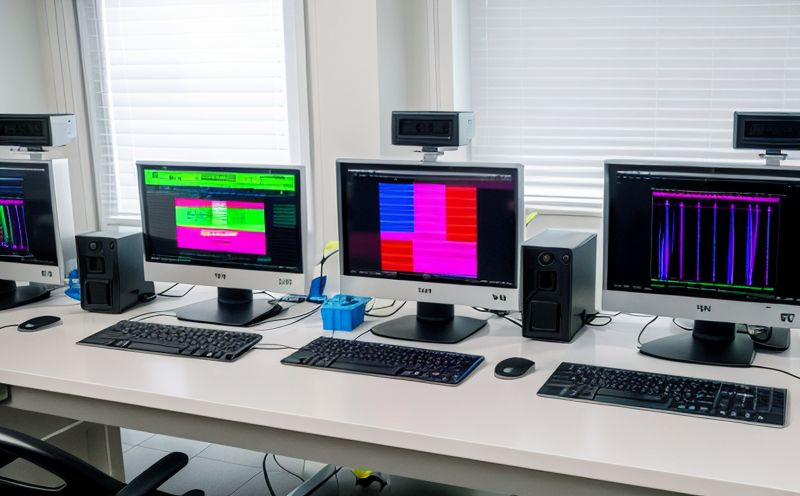CDC HIV Viral Load Quantification Testing
The Centers for Disease Control and Prevention (CDC) HIV viral load quantification testing is a critical diagnostic tool used to monitor the effectiveness of antiretroviral therapy in patients living with HIV. This test measures the amount of HIV RNA present in a patient’s blood sample, providing valuable information on the replication status of the virus within the body. Accurate and reliable results are essential for treatment management and patient care.
The primary purpose of this test is to assess how well antiretroviral therapy (ART) is working by measuring viral RNA levels in a patient's blood plasma. The test helps healthcare providers make informed decisions regarding the efficacy of the prescribed medications, adjust treatment regimens if necessary, or initiate new therapies.
The CDC recommends that all individuals infected with HIV undergo regular monitoring through viral load testing to ensure optimal health outcomes and prevent complications associated with the progression of the disease. This service is particularly important for patients who are newly diagnosed or those whose viral loads have increased despite treatment.
During the testing process, a blood sample is collected from the patient and sent to our laboratory for analysis. The sample undergoes rigorous quality control checks at every stage of processing, ensuring accurate results. Our team uses advanced instrumentation and methodologies that adhere strictly to CDC guidelines and international standards such as ISO 15189.
The test involves several steps: specimen collection, transport, preparation, nucleic acid extraction, reverse transcription (if RNA), amplification using real-time PCR technology, followed by data analysis. The results are reported in copies per milliliter (c/mL) and can range from undetectable to very high levels depending on the patient's condition.
Understanding the significance of this test is crucial for both healthcare providers and patients. Knowing your viral load allows you to take proactive steps towards managing your health effectively. It also helps in identifying when treatment changes might be necessary, thus preventing potential complications such as drug resistance or opportunistic infections.
The accuracy and reliability of these tests are paramount in ensuring patient safety and effective management of HIV infection. By adhering strictly to CDC protocols and using state-of-the-art technology, we provide accurate and consistent results every time. This ensures that healthcare providers have the necessary information to make informed decisions about their patients' care.
Our laboratory has extensive experience in performing these tests under various conditions, including challenging scenarios where other laboratories might struggle. We pride ourselves on our commitment to providing high-quality service with minimal turnaround times. Our team works diligently to ensure that each result is delivered promptly and accurately.
Benefits
The CDC HIV viral load quantification testing offers numerous benefits for individuals diagnosed with HIV, healthcare providers, and public health officials alike:
- Patient Health Monitoring: Regular monitoring helps manage the disease effectively, reducing the risk of complications.
- Treatment Adjustment: Provides data that can guide modifications to current treatment plans or initiation of new therapies.
- Evaluation of Therapy Efficacy: Helps determine whether the prescribed antiretroviral medications are working as expected.
- Potential for Early Detection: Can identify increases in viral load before they become clinically apparent, allowing timely interventions.
- Guidance for Clinical Trials: Assists researchers and clinicians in evaluating new treatments or combinations of drugs.
These benefits underscore the importance of this testing service in the broader context of HIV management and research efforts aimed at improving outcomes for those affected by this condition.
Quality and Reliability Assurance
We are committed to maintaining the highest standards of quality assurance and reliability in all our services. Our laboratory adheres strictly to CDC guidelines, ISO 15189 accreditation criteria, and other relevant international standards when conducting HIV viral load quantification tests.
Our rigorous quality management system includes:
- Accreditation: ISO 15189 accreditation ensures our laboratory meets stringent requirements for technical competence, proficiency in methods used, and continuous improvement processes.
- Proficiency Testing: Participation in external proficiency testing programs to ensure consistent performance across different batches of samples.
- Internal Controls: Implementation of internal controls at every stage of the test process to minimize errors and variability.
- Continuous Training: Regular training sessions for our staff to stay updated on the latest techniques and best practices.
In addition, we employ advanced instrumentation that is regularly calibrated and validated according to manufacturer specifications. This ensures precise measurements and reliable results every time. Our commitment to quality extends beyond technical aspects; it also involves ensuring timely delivery of accurate reports to healthcare providers and patients alike.
Our dedication to maintaining these high standards reflects our responsibility towards public health and the broader community affected by HIV/AIDS. By providing accurate, consistent, and timely results, we contribute significantly to improving patient care and advancing research efforts aimed at combating this global health challenge.
Use Cases and Application Examples
| Use Case | Description |
|---|---|
| New Diagnosis | Determining the baseline viral load to establish an initial treatment plan. |
| Treatment Initiation | Evaluating whether new antiretroviral drugs are effective in reducing viral replication. |
| Monitoring Efficacy | Assessing the effectiveness of ongoing treatment over time. |
| Treatment Failure Detection | Detecting signs that current therapy is no longer controlling HIV effectively. |
| Application Example | Description |
|---|---|
| Case Study: Patient A | A patient was diagnosed with HIV and started on a combination of antiretroviral drugs. Regular viral load tests showed that the treatment was initially effective in reducing viral replication significantly. However, after six months, there was an increase in viral load, indicating potential treatment failure. The healthcare provider adjusted the medication regimen based on these test results. |
| Case Study: Patient B | Patient B had a low initial viral load but showed signs of increased replication despite being on therapy. Routine testing revealed that the virus had developed resistance to certain drugs, necessitating changes in treatment strategy. |





